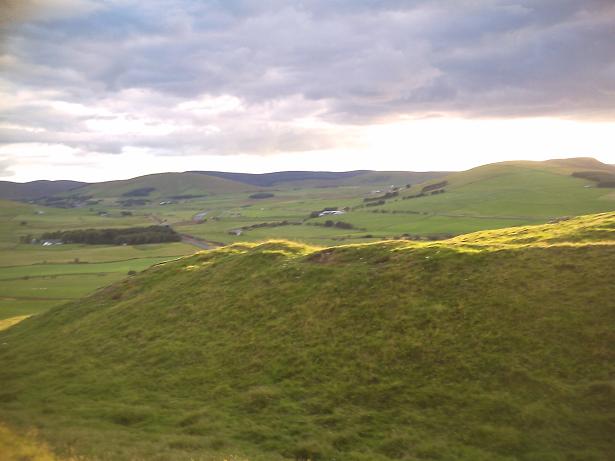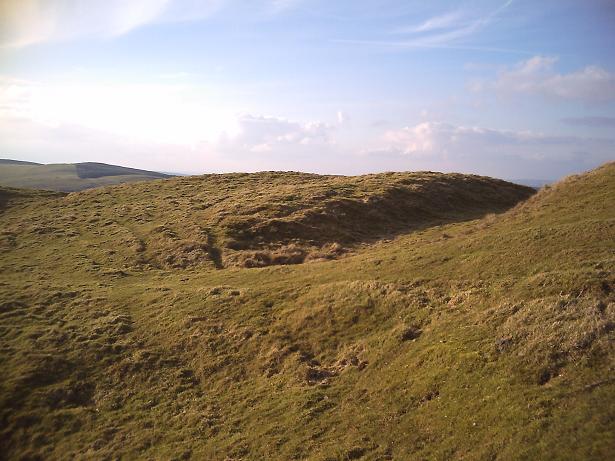I’d photographed the main panels and was turning to go when I saw a strange looking crack in the steep step of rock in the ground between the cup and ring panels. I looked again. And again! My heart went into overdrive and I had to sit down. I thought it was going to burst out of my chest. I was looking at a three foor long, two foot high bird like a Raven. I stood up. I sat down again and approached it sliding along the peaty grass. I ran my fingers along the deeply carved beak and around the beautifully shaped head. I simply could not believe what I was seeing and touching. I took a photo with my other half’s new camera.
When I looked back at the image on the camera screen under the trees, I saw what appeared to be a pair of bird’s feet above the Raven’s head. I walked over to check. As I looked in disbelief a Heron took shape. I could make out a bird below the Raven’s beak. It looked like a Curlew. It wasn’t carved out in deep relief like the Raven and Heron.
I resisted the temptation to wash off the deep coating of lichen, mossy slime and the peaty discoloured patina on the carvings and just started taking pictures as they were. The wind suddenly dropped and a horrendous midge attack ensued. I fled their bites shaking with utter joy. A sense of elemental elation carried me out of the wood and back to the car. I drove back to Lamlash. My head swam. I had to pull over at the top of the hill between Brodick and Lamlash and get out and get my breath back.
I returned a number of times that week. On the last day Mrs HD and The Boy came with me. They spotted the birds straight away (when I showed them the direction to look!). Suitably amazed, Alison took some nice photos. There had been a lot of rain the night before and that morning so the Raven was standing in a puddle of water and the carvings showed up better.
Reported the carvings by email to RCAHMS early in the week. Notified the Brodick Museum and Arran Heritage. Sent on the photos to both. I simply could not understand how these carvings sat in plain sight for so long without being noticed. A quick examination of photos on TMA and on BRAC showed the carvings visible but far in the background of Hob and Greywether’s photos. In the 1901 PSAS illustration the carvings lie under a strip of peat and turf separating the known cup and ring panels. Hmm... I thought... When exactly did the peat and turf wear away? Drove to Edinburgh to examine Stan Beckensall’s 2004 manuscript report and the photo archive at RCAHMS on Thursday. Beckensall never noticed them, his report contains no photographs. But I found M van Hoek’s photo, it was exactly the view I needed and showed the strip of peat to be there in 1980 but a bit of the rock is beginning to show through. I paid the very helpful member of staff £1.18 for the colour photocopy of it and left.
RCAHMS got in touch today and asked me to pass the details on to Discovery and Excavation Scotland. So that’s that.
So anybody going to Arran this summer, get along to Stronach Wood (very easy access and very close to Brodick) and catch some elemental revelation for free.









































